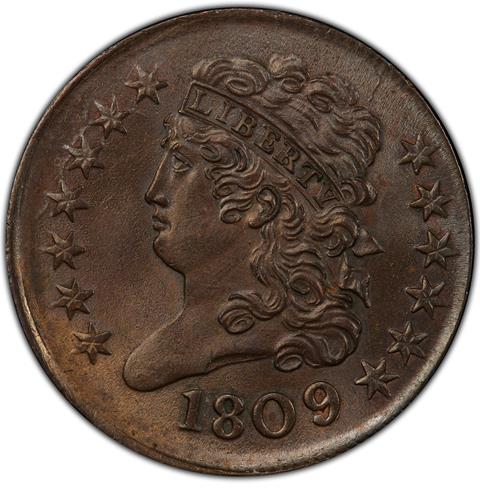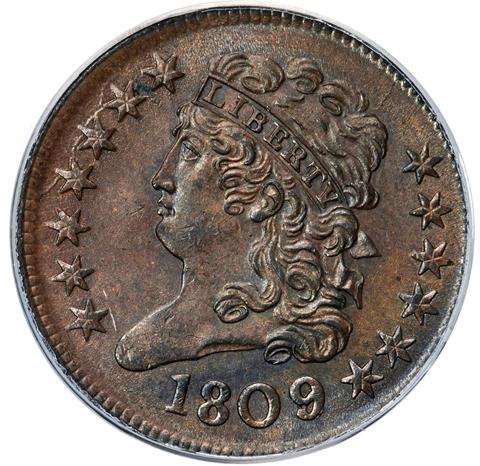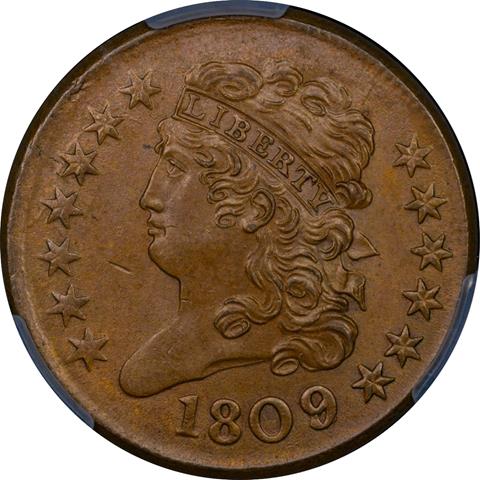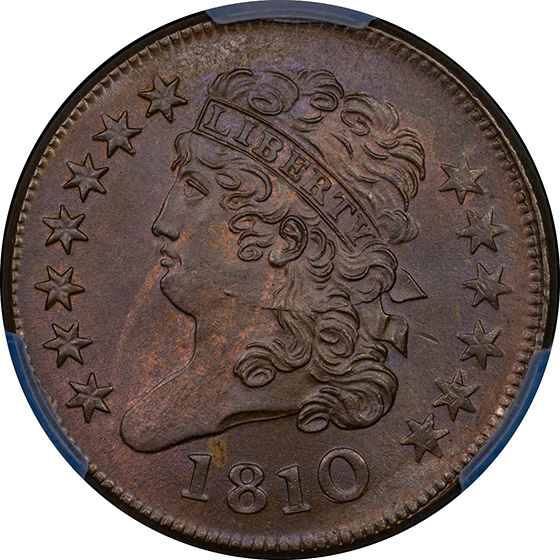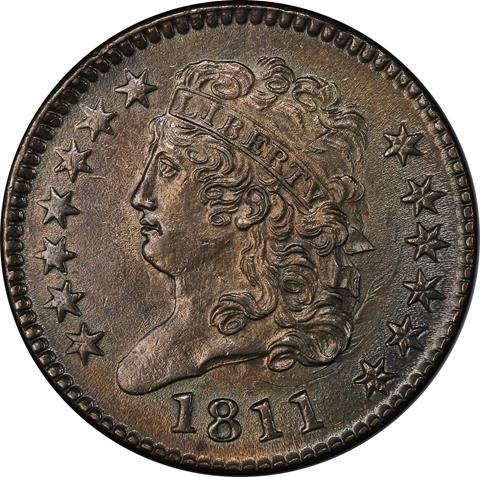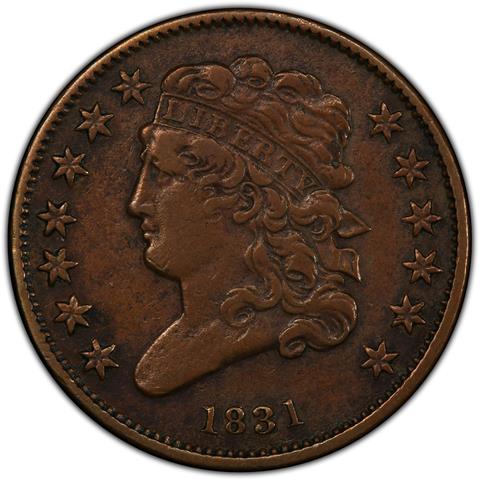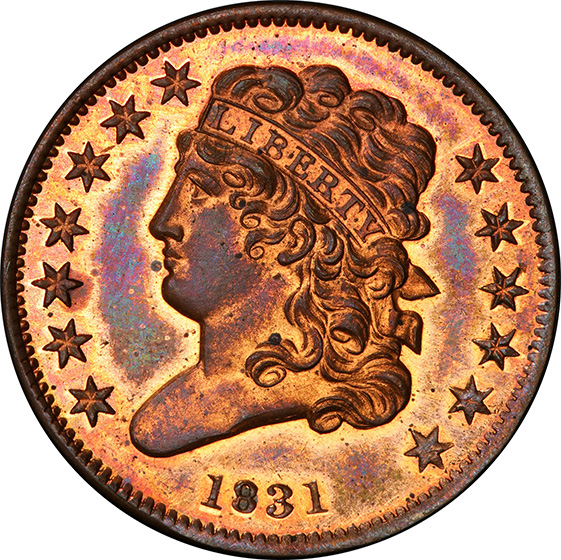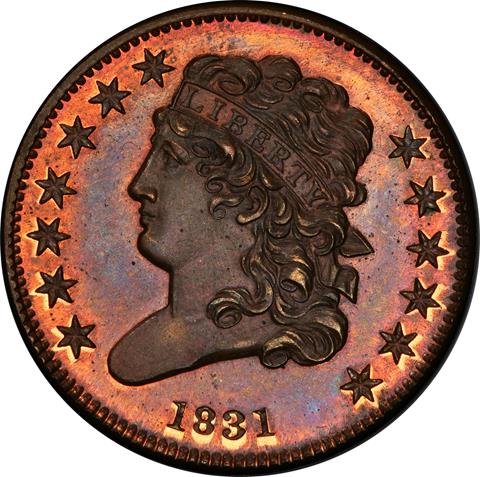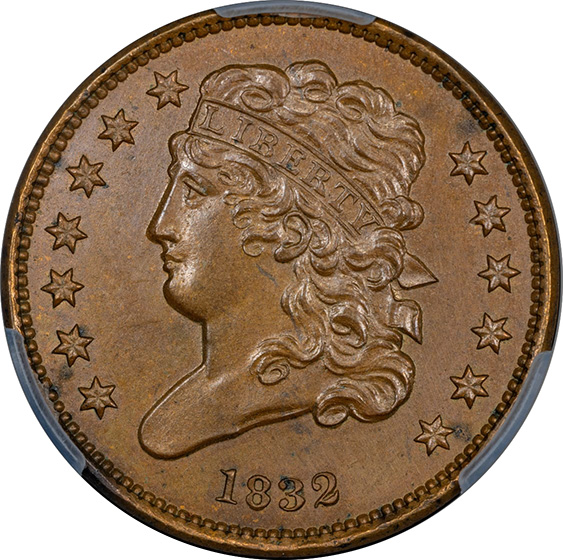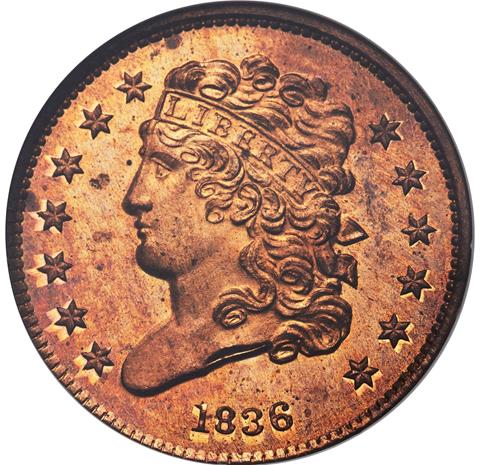Classic Head Half Cents
Classic Head Half Cents (1809-1836)
The beginning of the 19th century saw Europe in turmoil. The Industrial Revolution was in full swing. England, at the forefront of technology, was trying to maintain a monopoly on the new machines and processes that gave it great economic advantage. Industrial spies from other countries exploited inventors and workers in order to duplicate these techniques and machines. A second revolution, induced by the new economic forces, encouraged political change. All over Europe were revolution and war. People began to believe that political systems everywhere needed to be recast.
As the fledgling United States settled down to the business of creating its own political reality, the European maelstrom tossed many skilled artisans onto American shores. One of these immigrants was John Reich, a German engraver caught up in the Napoleonic Wars who paid for.... (Expand Text)
1809/6 CLASSIC HEAD 1/2C, 9 OVER INVERTED 9 MS65 Brown PCGS
9 OVER INVERTED 9. C-5. GEM CHOCOLATE BROWN SURFACES. TIED FOR HIGHEST GRADED. CAC.
$38,500.00
|
1809/6 CLASSIC HEAD 1/2C, 9 OVER INVERTED 9 MS65 Brown PCGS
GEM CHOCOLATE BROWN SURFACES WITH HINTS OF RED PIERCING THROUGH. TIED FOR HIGHEST GRADED. CAC.
$35,000.00
|
1809/6 CLASSIC HEAD 1/2C, 9 OVER INVERTED 9 MS65 Brown CACG
9 OVER INVERTED 9. C-5. GEM LIGHT CHOCOLATE BROWN SURFACES. TIED FOR HIGHEST GRADED. CAC.
$35,000.00
|
1810 CLASSIC HEAD 1/2C MS65 Brown PCGS
GEM LIGHT CHOCALATE BROWN SURFACES WITH MINT RED STILL EVIDENT. JUST TWO COINS GRADED HIGHER AT PCGS. CAC.
$30,000.00
|
1811 CLASSIC HEAD 1/2C MS62 Brown PCGS
SHIMMERING RICH BROWN SURFACES. THIS IS A LEGANDARY RARITY IN MINT STATE FOR THE CLASSIC HALF CENT SERIES. ONLY TWO COINS ARE GRADED HIGHER. CAC.
$87,500.00
|
1831 CLASSIC HEAD 1/2C XF45 Brown PCGS
EVENLY WORN, WITH LIGHT CHOCOLATE BROWN SURFACES. ORIGINAL STRIKING, RARITY-6. ONLY ABOUT 30 COINS EXIST TODAY IN ALL GRADES. JUST THREE AU COINS GRADED HIGHER.
$51,500.00
|
1831 CLASSIC HEAD 1/2C, REVERSE OF 1836 PR65 Red Brown PCGS
1ST RESTRIKE, REVERSE OF 1836. ONLY 30 STRUCK. GEM RED/BROWN LUSTROUS SURFACES. CAC.
$49,500.00
|
1831 CLASSIC HEAD 1/2C, REVERSE OF 1840 PR66+ Red Brown PCGS
REVERSE OF 1840 RESTRIKE. FABULOUS RED BROWN SURFACES. THIS IS A SECOND RESTRIKE. ONLY 12 MINTED. RARITY-7. BY FAR THE RAREST OF HTE THREE 1831 HALF CENT VARIETIES. SOLE HIGHEST GRADED. CAC.
$137,500.00
|
1832 CLASSIC HEAD 1/2C PR65 Brown CACG
GEM CHOCOLATE BROWN SURFACES. ONLY 30 STRUCK. JUST A SINGLE COIN GRADED HIGHER. CAC.
$60,000.00
|
1836 CLASSIC HEAD 1/2C, ORIGINAL PR66 Red Brown PCGS
GEM, MOSTLY RED PROOF SURFACES. ONLY 42 STRUCK. TIED WITH ONE OTHER COIN FOR HIGHEST GRADED. CAC.
$82,500.00
|

